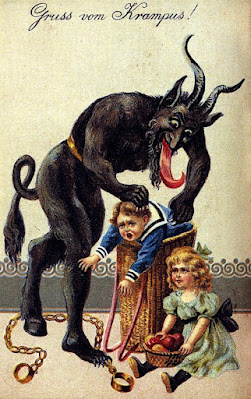Friend Xerxes, the left-wing commentator, for some reason this week hearkens back to the Satanic child abuse scares in Saskatchewan back in the eighties and nineties. And his conclusion seems to be that the fatal error that led us astray was believing in the Devil.
“Unfortunately, there’s no tab in the corner of our mental screens to ‘Hide Satan.’”
Wanting a tab on your mental browser to “hide Satan” sounds like whistling past the graveyard: “if I don’t look, he can’t see me.” Denying evil exists is not a wise strategy; but a sadly common one.
The Saskatchewan hysteria, and the paranoia all around the world for a couple of decades over imaginary child abuse cults, was founded on two gross fallacies: a belief in repressed memories, and the claim that “children never lie.” (Unfortunately echoed more recently with the mantra that “women never lie about rape.”) These two obviously false claims led people into the hysteria. I remember, circa 1984, proposing in a Banff workshop a book arguing against the idea of repressed childhood memories, and getting shock and horror from a female member of our group. Didn’t I care about child abuse? Was I such a monster?
This was also the first time I ever heard of a speaker being shouted down on a Canadian college campus: some speaker at McGill pointing out that there was no evidence for repressed memories. I would not have thought such a thing possible; now it is the norm.
People only want to shout things down when they are true: never when they are false…
But the idea of repressed memories obviously defied common sense. If something genuinely traumatic happens to us, we do not forget it. Just the reverse: the memory haunts us, and we find it hard to turn away from it.
And nobody who has been around children can honestly believe kids never make things up. Ask them who took a cookie from the cookie jar. Small children even start out having difficulty distinguishing imagination from reality.
Why did people want so badly to believe in ritual child abuse rings? So badly that they would rid themselves of basic reason to do so, and refuse to listen to argument? I suspect it was projected guilt over abortion, fully legalized at almost the same time. People needed a scapegoat, some other, so they could still think of themselves as loving and defending children despite supporting abortion.
Significantly, the pedophilia hysteria broke out at about the same time: the panic about pedophile priests, pedophilic orphanages, the idea that pedophiles once convicted must be identified to all neighbours whenever they moved, the idea that they must be either chemically or physically castrated, and can never be rehabilitated.
Of course, pedophilia is a problem; but I can recall how much more casually it was thought of and dealt with in my youth. Something had changed, and it was not the pedophilia.
So too, I suspect, how much more protective we have become of our children in general, not allowing them to do anything without supervision. Giving them “safe spaces” wherever they go, never letting them be “triggered.” It is all overcompensation for abortion. Although the moment our own interests are impacted, the kids are a ready sacrifice: get them all vaccinated, shut down the schools, although the vaccine is more dangerous to them than the virus, and the hiatus in their education is liable to harm their future. After all, otherwise they might infect adults.
The residential schools hysteria is a continuation, a culmination, of this same mass psychosis. The accusations are all the same as the Satanic cult panic: sexual abuse, torture, children being secretly buried in mass graves, and so forth. The projection is perfect: the guilt over abortion gets assigned to those who object to abortion. Most notably the Catholic Church, which ran most of the schools.
No surprise that no bodies turned up in any mass graves.
The residential schools charges rely on the same evidence as the earlier satanic cult legends: the tacit assumption that Indians, being childlike innocents, can never lie—the romantic myth of the “noble savage.” That childhood memories are reliable—memories from childhood are much of the “evidence.” And that indigenous “oral history” is reliable—in any other context, the term for this would be “urban legend.” Many of the charges can indeed be found elsewhere as urban legends.
And of course, it is about the children. That hints at its origin in guilt over abortion. Although Indian children on reserve are being driven to suicide, and young Indian women keep going missing, and we continue to allow that to happen instead of dealing with the problems of the Indian family.
Whether the Devil actually exists is not relevant here. It will not do to doubt there actually are such things as Satanic cults. That is a matter of record: the Hellfire Clubs of the 18th century, Aleister Crowley and the Golden Dawn, Anton LaVey and the Church of Satan, Gnosticism tracing back to the early centuries AD, Hindu Shakti cults, Haitian voodoo, and so on. To shift the question from the existence of child abuse to the existence of Satan is a red herring.
Of course, child abuse really does happen, more often than we want to admit. So does child sexual abuse, sadism, and pedophilia. So does evil in general. To recognize as much is not hysteria. Refusing to recognize it is hysteria. Nor is it hysteria to believe in Satan as a personal spirit, with an independent will; as have most of the greatest minds of history.
The hysteria, the paranoia, is in what we accept as evidence.













No comments:
Post a Comment